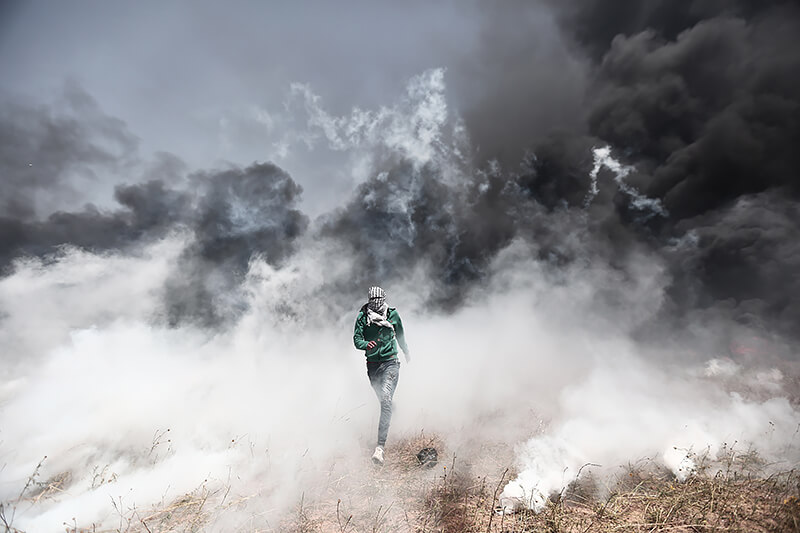While Faiq Hassan’s painting style was influenced by his studies in Europe, he was dedicated to celebrating Iraqi national pride and worked towards developing a local visual language. His cubist works such as Bedouin Tent relay narratives of daily life from the Iraqi peasants living along the Tigris and Euphrates. In this work, two figures are in a tent and surrounded by objects, including the traditional dallah and finjan (coffee pot and cups). The work, rendered in a fragmented fashion is multifaceted, allowing for various viewpoints into the intimate scene. Hassan graduated from the École Nationale Supérieure des Beaux-Arts in Paris in 1938 after receiving a government scholarship. He returned to Baghdad upon completion of his studies and founded the Department of Painting at the Institute of Fine Arts. In 1940, he started the artist group Société Primitive, which in 1959, was renamed the Pioneers Group and in 1967, he founded the Zawiya art group. Hassan has been the subject of numerous solo exhibitions in Baghdad and in 1965 was part of the Iraqi Art group show in Beirut. He was awarded the Golden Prize of the Gulbenkian Foundation in Iraq. His work is in numerous public collections, including Mathaf: Arab Museum of Modern Art in Doha; and the Jordan National Gallery of Fine Arts in Amman. More on Faik Hussain
Please visit my other blogs: Art Collector, Mythology, Marine Art, Portrait of a Lady, The Orientalist, Art of the Nude and The Canals of Venice, Middle East Artists, 365 Saints, 365 Days,
and Biblical Icons,
also visit my Boards on Pinterest and deviantart
Images are copyright of their respective owners, assignees or others.
Some Images may be subject to copyright
I don't own any of these images - credit is always given when due unless
it is unknown to me. if I post your images without your permission, please tell
me.
I do not sell art, art prints, framed posters or reproductions. Ads are
shown only to compensate the hosting expenses.
If you enjoyed this post, please share with friends and family.
Thank you for visiting my blog and also for liking its posts and pages.
Please note that the content of this post primarily consists of articles
available from Wikipedia or other free sources online.










.jpg)
,%20Odyssey%20of%20a%20People,%201980.jpg)





